
All categories
Featured selections
Trade Assurance
Buyer Central
Help Center
Get the app
Become a supplier

(17260 products available)






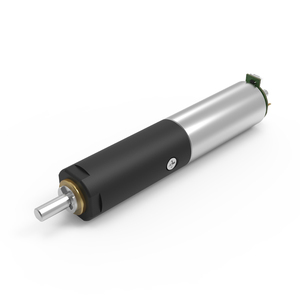
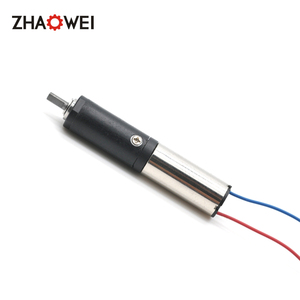
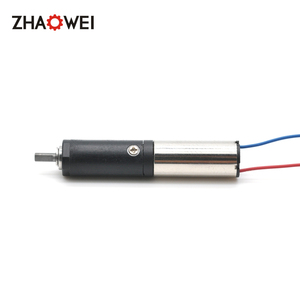
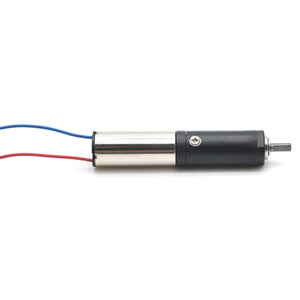

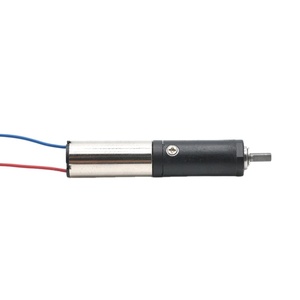









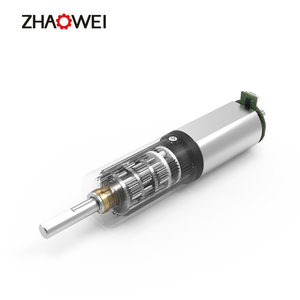

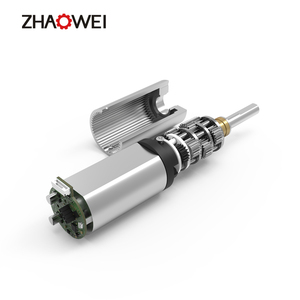



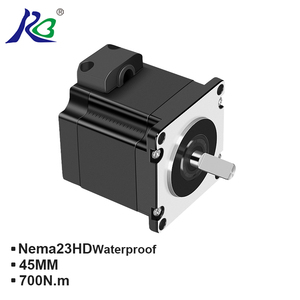
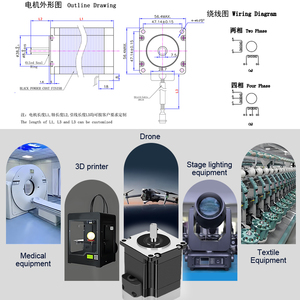



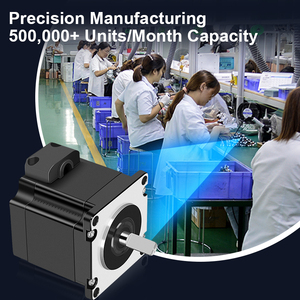

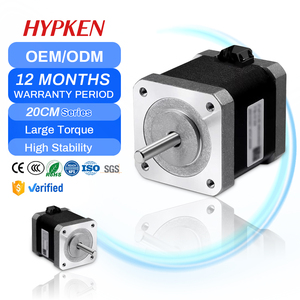











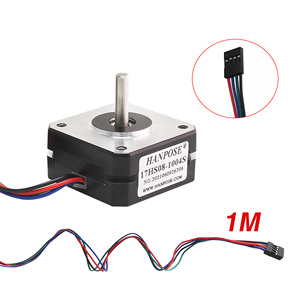
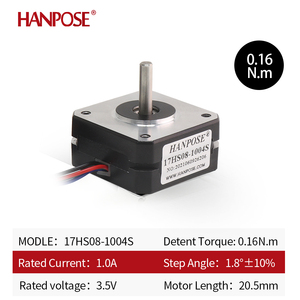
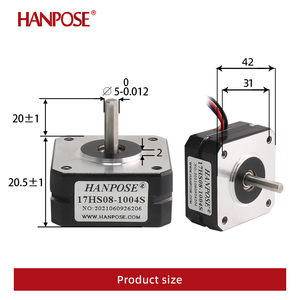
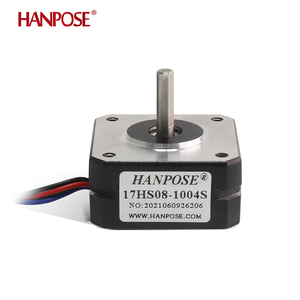


Mini stepper motors are precision electromechanical devices that convert electrical energy into controlled rotary motion. They are widely used in industries for automation, robotics, and health-tech devices.
Based on their construction and operation, these motors fall into distinct categories.
These motors have permanent magnets in their rotors. This magnetization process generates a magnetic field that interacts with the stator's electromagnets. The rotor is then forced into discrete magnetic positions, causing it to move in steps. These motors offer high torque at low speeds, making them ideal for static applications requiring strong holding torque, such as in printer heads and camera autofocus.
Variable reluctance stepper motors lack permanent magnets in their rotors. Instead, their rotor consists of a soft ferromagnetic material. When the stator coils are energized, they create an electromagnetic field. This field pulls the rotor toward the stator teeth's closest position and minimizes its magnetic reluctance. While these motors provide less torque than other types, their simple construction makes them reliable and cost-effective for low-load applications. Hence, they are often used in devices like positioners and valve actuators.
Hybrid stepper motors combine features from permanent magnet and variable reluctance motors. They usually have a permanent magnet rotor with vane-like teeth to improve magnetic attraction. This unique construction provides better precision, torque, and stepping resolution. Hybrid stepper motors are widely used in CNC machines, robotic arms, and automated positioning systems in industrial settings.
Bipolar mini stepper motors require the alternation of the current direction in their stator coils for operation. They typically have two phases, and reversing the current in each phase causes the rotor to move in opposite directions. This motor design enables greater torque and control range, making it suitable for applications demanding robust performance, such as in robotic actuators and precision optical systems.
Unipolar mini stepper motors have more than two phases with two coils per phase. They are wired so that current can flow through each coil in one direction only. This configuration simplifies the control circuitry, although it offers lower torque than bipolar motors. Unipolar motors are commonly used in low-power applications where simplicity and reliability are crucial. Typical use cases include small feeders, dials, and simple pick-and-place machines.
Mini stepper motors are increasingly gaining popularity because of their ability to provide precise control of movement in several industrial applications.
Stepper motors provide precise control of movement and positioning in this field of application. For example, in robotic arms, these motors enable accurate positioning of joints for tasks like assembly, welding, and painting. Such precision boosts productivity and ensures consistent quality in the manufactured items. Therefore, in robotics, using a mini stepper motor allows for better and increased working ability.
These motors are crucial in computer numerical control (CNC) machining, as they enable precise control of cutting tools and workpieces. In these machining processes, mini stepper motors control movements along multiple axes to produce intricate designs in metal, plastic, and wood. As a result, this precision leads to improved product consistency and reduced material waste in the long run.
Mini stepper motors have a critical role in системах, which require precise movement and positioning to function well. These motors provide the necessary precision and reliability to automate these systems for better performance in industries like telecommunications, aerospace, and pharmaceuticals. The consistency and accuracy in these systems boost overall productivity and reduce human errors.
In the textile industry, mini stepper motors control loom and knitting machine operations. They provide the precision needs for pattern creation, fabric trimming, and machinery automation. These motors help the industry increase production speed while maintaining the accuracy and consistency required for high-quality fabrics. Hence, their usage leads to better textile industrial effectiveness and longer life.
In the pharmaceutical industry, mini stepper motors are used in equipment like pill counters, bottle fillers, and automated packaging machines. These motors ensure precise measurements and maintain stringent quality control standards. Their reliable performance reduces waste and enhances production efficiency. Therefore, the medical motor's introduction results in several quality and cost-saving benefits for the pharmaceutical industry.
Mini stepper motors come with different specifications that make them ideal for distinct applications. Common features to consider include holding torque, step angle, and power ratings.
Holding torque is the maximum torque a motor can exert when stationary, measured in Newton-centimeters (N·cm). It indicates the motor's ability to maintain a specific position under load. The smaller the step angle, the higher the motor's precision. Normal step angles in mini stepper motors include 0.9°, 1.8°, and 3.6°.
Typical power ratings range from 12V to 48V DC, depending on the application needs. Higher voltage ratings improve torque and speed, while lower ratings offer finer control. The stronger the torque, the better the efficiency and speed of the small stepper motor.
Construction materials for mini stepper motors include steel alloy for the rotor, copper wire for the coils, and high-quality permanent magnets or soft ferrite for the stator and rotor cores, respectively. These materials reduce friction, improve electromagnetic interaction, and enhance the overall lifespan of the motor.
In installing mini stepper motors, the following components and phases are important. They include a power supply, motor driver, mount, and mounting bracket. The steps of the installation are as follows:
Frequent preventative maintenance and occasional repairs extend a mini stepper motor's life. Regular checks should ensure there is no dust or debris on the motor or surrounding area. Clean the motor's exterior with a soft cloth. Use compressed air to remove particles from vents. However, avoid getting inside the motor.
Monitor the electrical connections frequently for any looseness or corrosion. Ensure all wires and connectors are tightly secured and clean. Lubrication is not commonly done in stepper motors. But if necessary, use a minimal amount of non-conductive grease on moving parts. Conduct this after disassembling the motor, as grease might interfere with the motor functioning.
Over time, stepper motors may develop overheating issues due to prolonged use. Ensure the motor has good cooling airflow. Use a fan to help cool the area if the system generates much heat. Repair small stepper motors by replacing worn-out components like bearings, gears, or the rotor. Further, damaged coils or windings need restuffing, which should only be done by experienced professionals.
In case the motor shows signs of failure, like missed steps or erratic behavior, use a multimeter to test the windings for continuity. Replace one broken wire or circuit at a time instead of doing a blanket replacement. This approach helps maintain as much original material as possible.
For components like drivers, refer to the manufacturer's guide for troubleshooting common issues. Always source replacement parts that match the original specifications to ensure seamless integration into the system.
Several parameters define the quality of mini stepper motors, and many of them are related to safety. These include the materials used in their construction, the precision of their components, and the environmental conditions they endure. Therefore, to achieve high quality, focus on the following features.
Focus on certified suppliers for reliable lubrication oils, seals, and bearings. Always consider the working environment of mini-stepper motors in hard conditions and choose devices with extra protection against dust, moisture, and extreme temperatures. Select motors with enclosures or anti-dust coatings if the operating conditions are harsh.
In torque rating, operating the motor beyond its holding torque can cause loss of steps, leading to malfunction and potentially unsafe situations. Therefore, always ensure load requirements match the motor's torque specifications. Check the electrical insulation class to ensure it can handle the operational power without degrading over time. Common classes include A, B, F, and H, with B being the most efficient.
Motors producing excessive heat can cause insulation breakdown or component failure. Install motors with good heat dissipation capacity. This can be fans or heat sinks in thermally critical environments. Use thermal sensors to shut down or reduce loads in case overheating happens.
Noise can become a safety issue when it interferes with other system components' normal operations or when workers' hearing is impacted. Select low-noise motors and control strategies like microstepping to reduce audible noise. Vibrations and torque ripple cause mechanical resonance, damaging components or structures. Therefore, use dampers to minimize these effects.
The electrical parts of mini stepper motors carry a significant risk if not properly grounded or insulated. Follow standard electrical installation procedures to prevent shock hazards. Particular attention should be placed on dust and moisture protection. This is because, in their presence, electrical components are at risk of short-circuiting, leading to system failure.
A1: Unlike a regular DC motor that spins continuously, mini stepper motors move in precise, fixed steps. This property makes them appropriate for applications requiring exact positions. Such applications include robotics and automation, where accuracy is a priority.
A2: Industries like robotics, CNC machining, and medical devices frequently require precision and control. These are the spaces where mini stepper motors perform most effectively. Their ability to provide accurate positioning and repeatability makes them essential in such areas.
A3: No, a controller is necessary to send the exact step signals to the motor. This signal ensures that the motor moves to the correct position. Without it, the motion would be chaotic.
A4: The right motor depends on the application's specific torque, speed, and precision requirements. First, people should determine these needs before selecting a motor to ensure optimal performance.